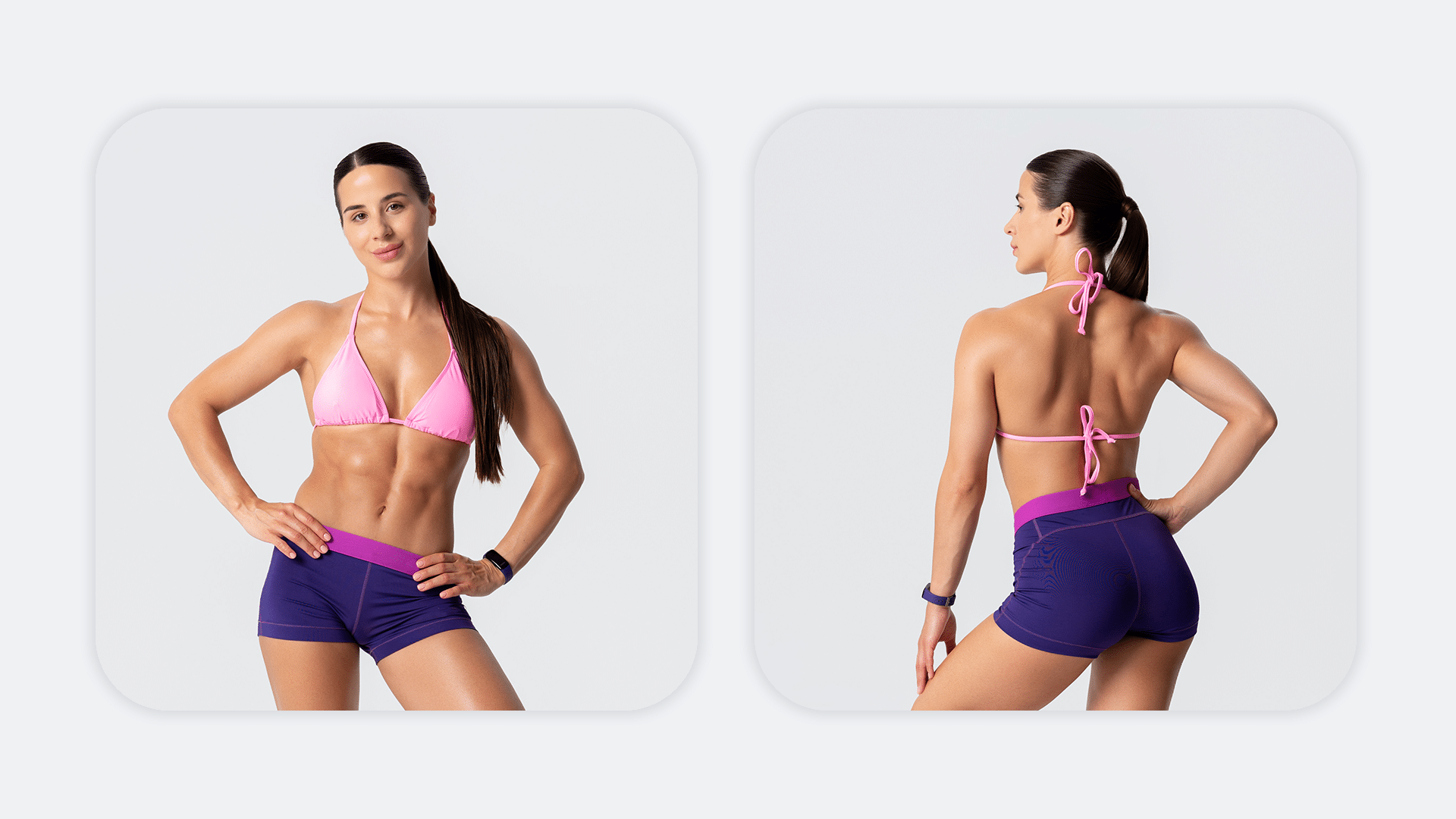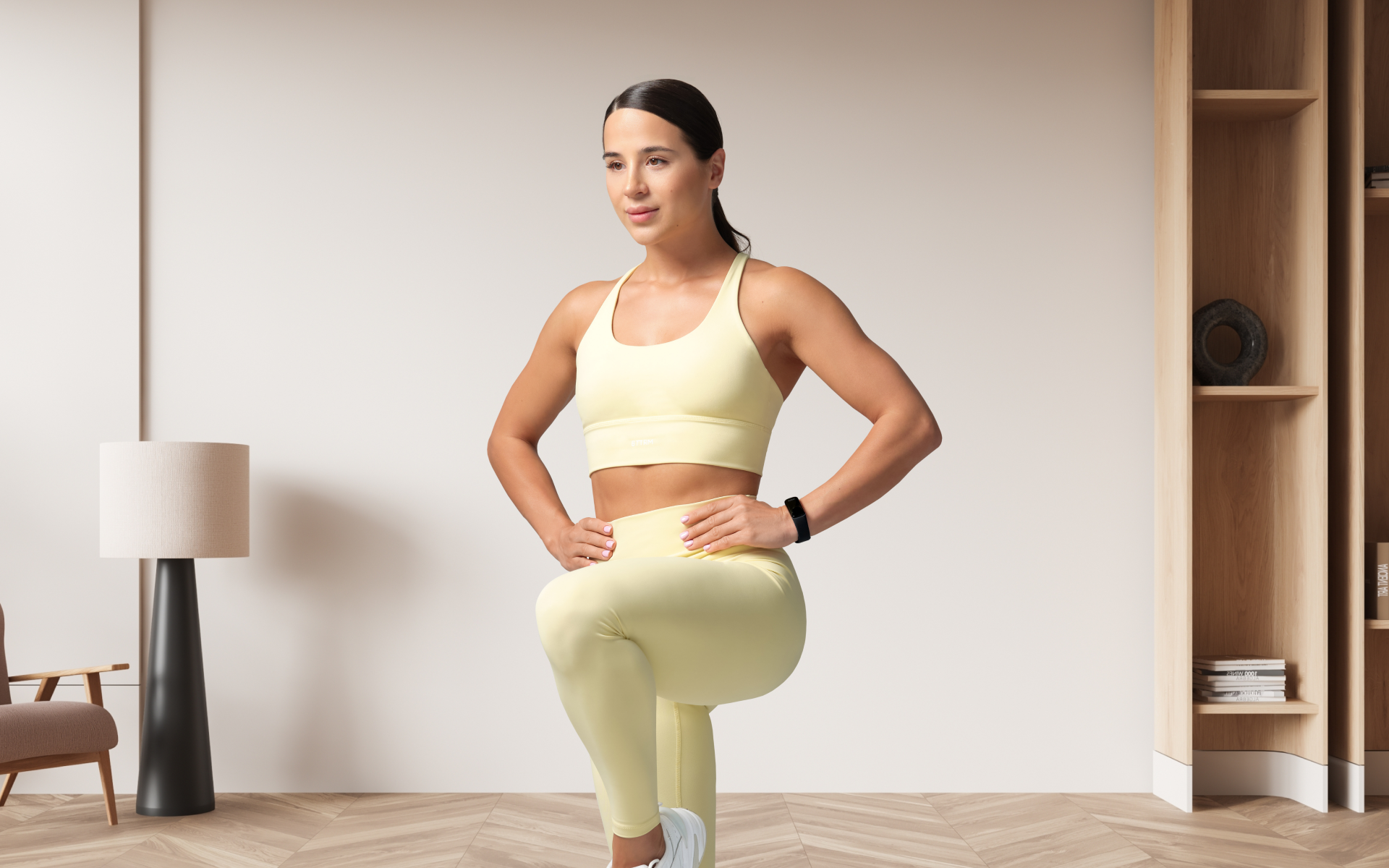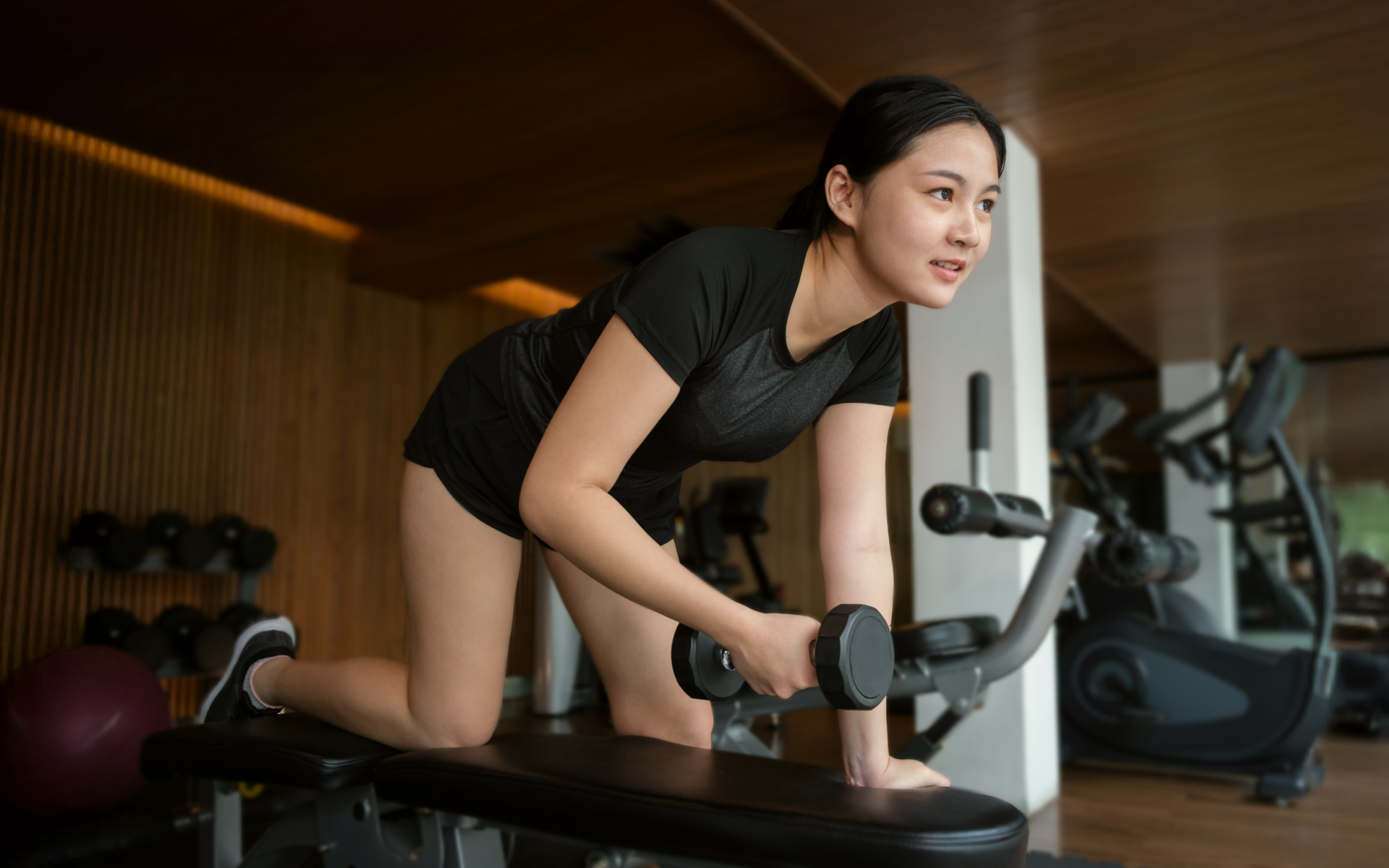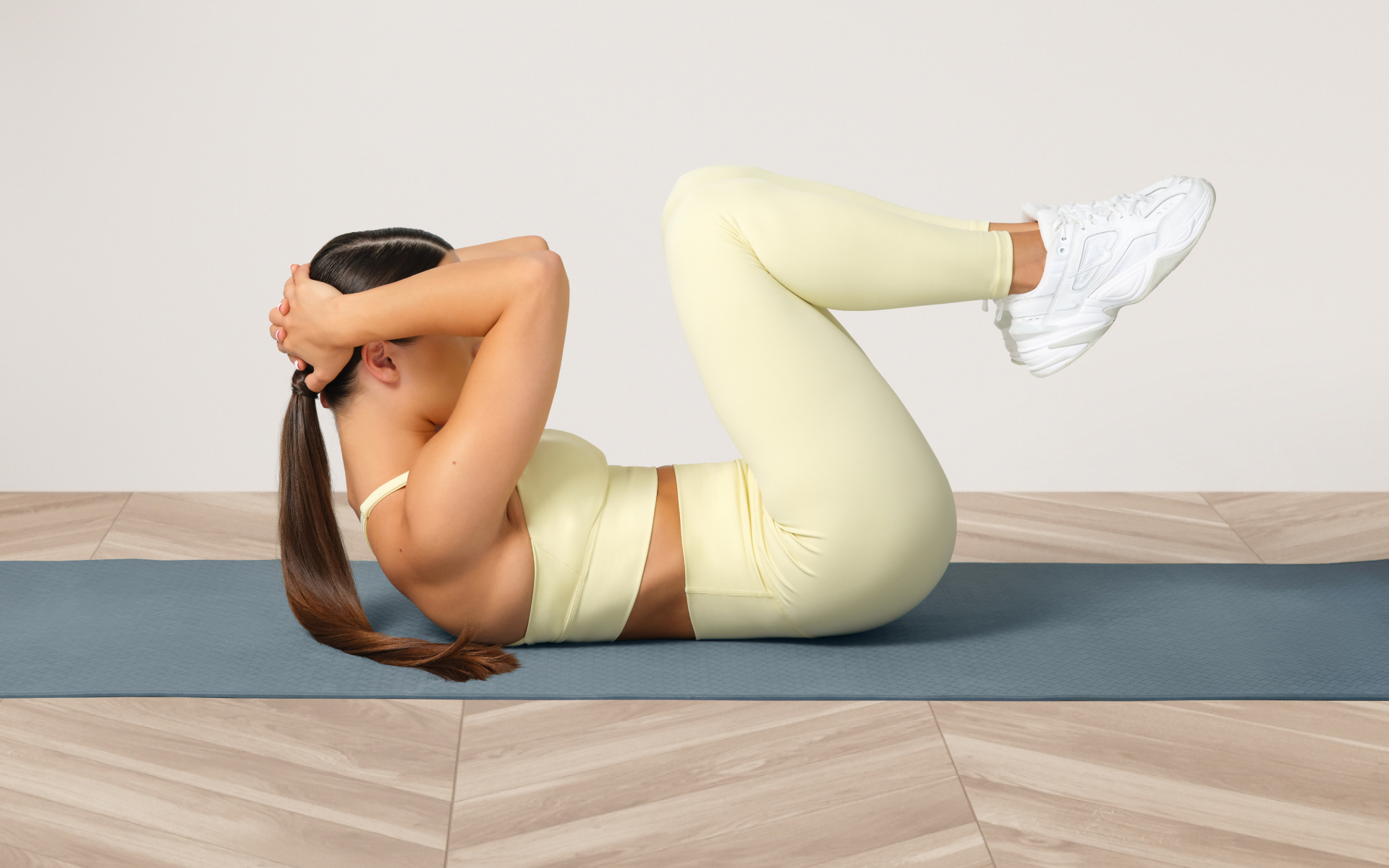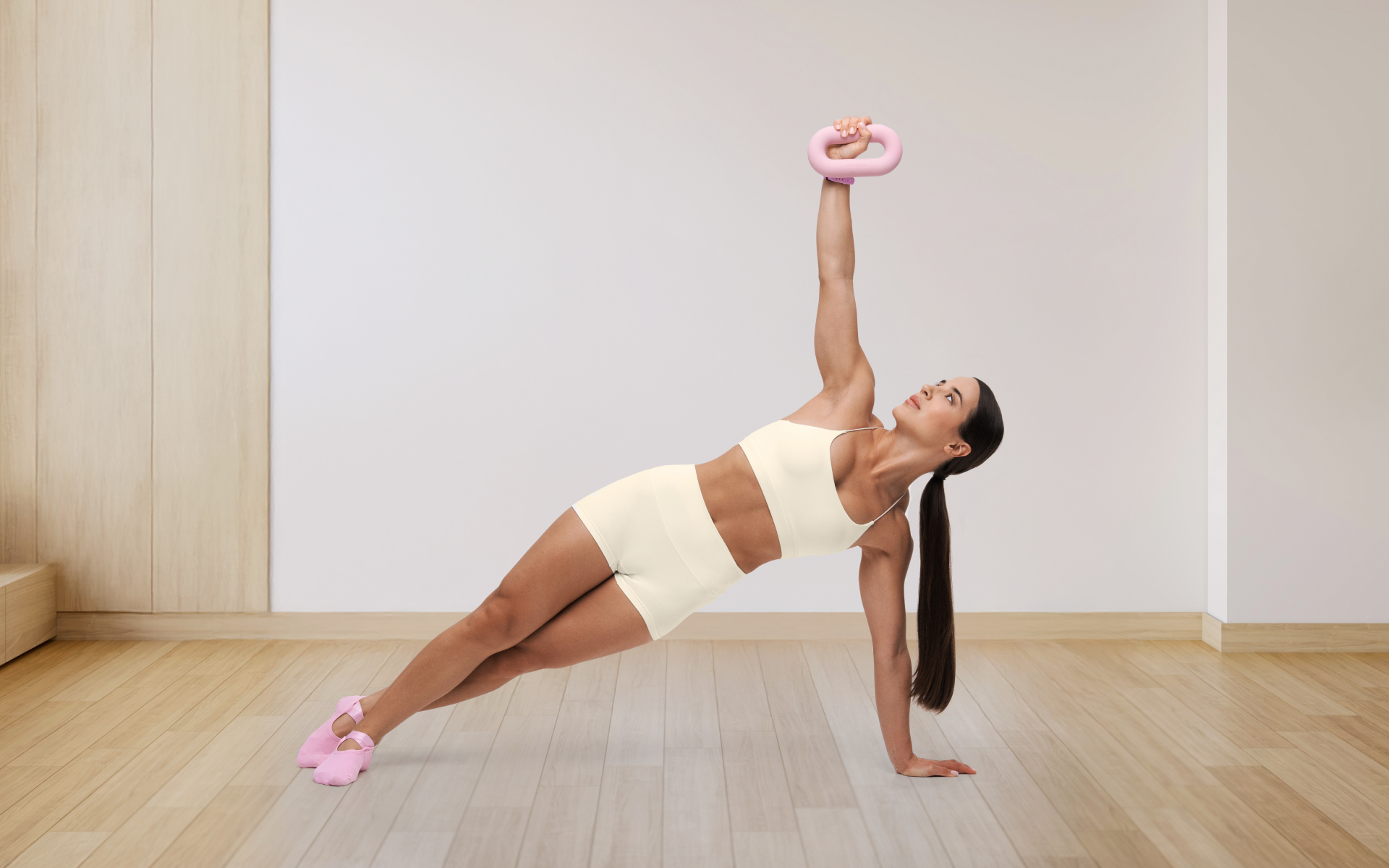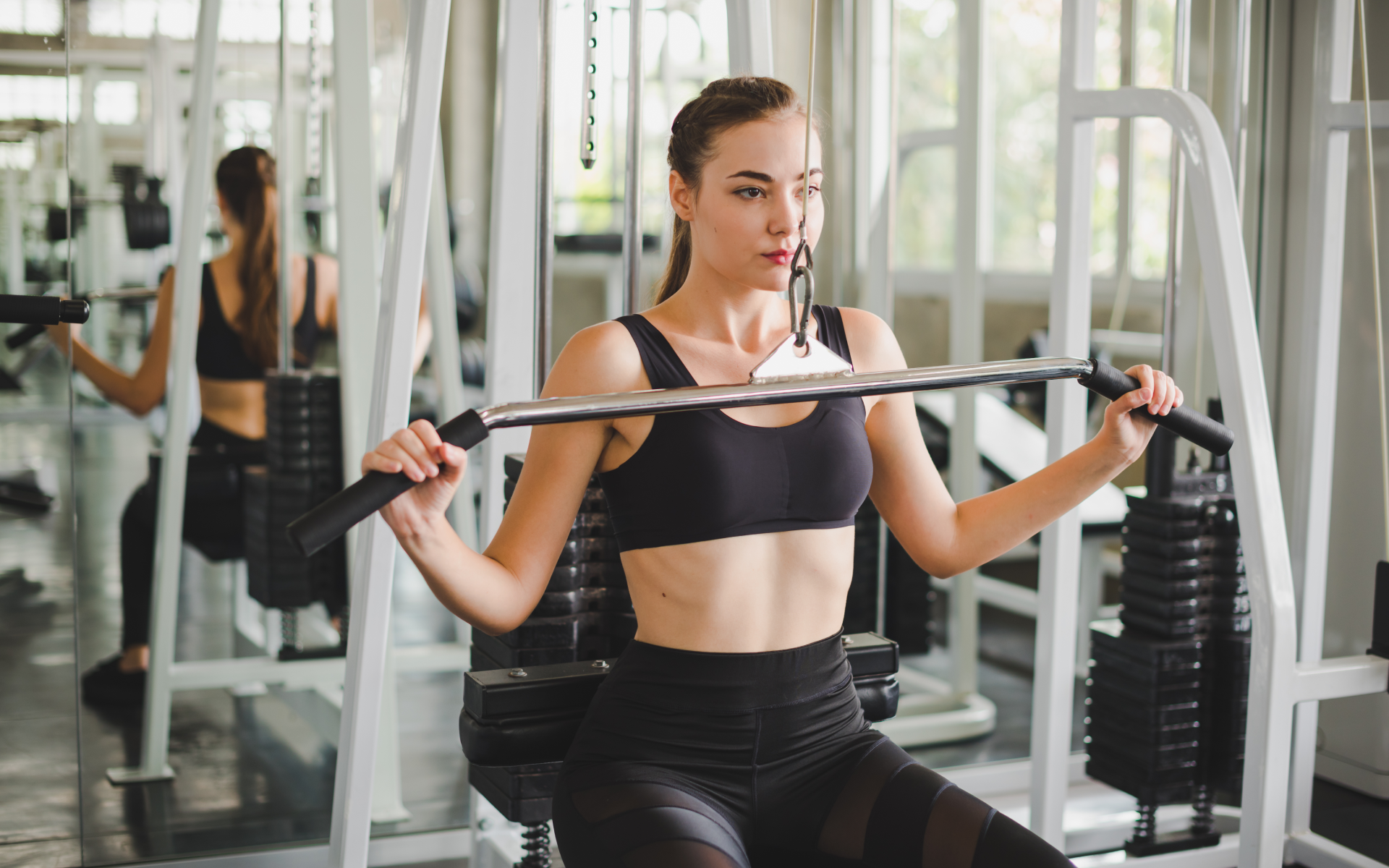A strong and well-developed back is crucial for overall fitness, posture, and functional movement. It is composed of several major muscle groups, including the latissimus dorsi (lats), lower trapezius, infraspinatus, rhomboids, and spinal erectors. Choosing the best exercise for each can be a challenge with lots of opposing opinions about which works best. Let’s see what the experts say and discuss several workouts you can try to develop your back, whether you are struggling with stiffness or looking to put on mass.
What Is the Best Exercise for Your Back?
The best exercise for your back depends on which muscles you’re trying to strengthen, as there are several in the back, including the lats, lower trapezius, infraspinatus, rhomboids, and spinal erectors. Although many of the muscles of the back complement and assist each other for performing movement patterns, each muscle has its own role. . While there are countless back exercises to choose from, compound exercises are typically your best bet for addressing multiple muscle groups at once. For instance, a study comparing how the different muscle groups of the back responded to common back exercises showed that the bent-over row is a highly effective exercise, due to its quality activation of several important back muscles, including the middle trapezius, lower trapezius, latissimus dorsi, infraspinatus, and erector spinae(1).
Bent Over Row
- Grip a barbell with your palms facing down so your wrists, elbows, and shoulders are in a straight line.
- Bend forward, keeping your back straight and your knees slightly bent.
- Slowly raise the weight to your chest, pausing briefly at the top.
- Slowly lower the weight back to the starting position.
- Do 1 – 3 sets of 8 – 12 reps
- Increase some combination of resistance, repetitions, or sets as you get stronger to ensure progressive overload leading to continued improvement.
Are 4 Back Workout Exercises Enough?
Four exercises can be enough for a good back workout if you choose the right ones, do them with adequate intensity, and focus on achieving results. Great choices for exercises that will help you achieve a stronger back include the bent-over row we just mentioned, as well as the inverted row, the seated row, and I-Y-T Raises(1).
Inverted Row
The inverted row will target your middle traps, lats, and infraspinatus(1).
- Position a bar on a rack at about waist height.
- Hang under the bar slightly wider than shoulder width. Your body should be straight with your heels on the floor, like an upside-down push up.
- Pull yourself toward the bar, flexing at the elbow and pausing at the top briefly.
- Slowly lower yourself back to the starting position.
- Do 1 – 3 sets of 8 – 12 reps
- Increase some combination of resistance, repetitions, or sets as you get stronger to ensure progressive overload leading to continued improvement.
Seated Row
The seated row will target your middle traps and lats(1).
- Perform the seated row on a seated cable machine.
- Grip the bar tightly and keep your wrists and forearms in a straight line.
- Pull the cable toward your chest.
- Pause briefly at maximum contraction before slowly allowing the cable to return to its original position.
- Do 1 – 3 sets of 8 – 12 reps
- Increase some combination of resistance, repetitions, or sets as you get stronger to ensure progressive overload leading to continued improvement.
I-Y-T Raises
I-Y-T Raises are great for targeting the middle and lower traps and infraspinatus(1).
- Lay belly down on a bench with your arms extended toward the ground and your palms facing in. Hold onto a light dumbbell in each hand if you need additional resistance.
- To form the letter I, raise your arms toward the ceiling above your head, then lower them back to the ground.
- To form the letter Y, raise your arms at a 45-degree angle and point your thumbs toward the ceiling before lowering the arms again.
- To form the letter T, raise your arms at a 90-degree angle and point your thumbs toward the ceiling before lowering the arms again.
- Repeat 5 – 10 times.
BetterMe will keep you laser-focused on your weight loss journey! Nutrient-packed meal plans, fat-blasting workouts, galvanizing challenges and much more. Try using the app and see for yourself!
How to Get a Bigger Back
Getting a larger back requires a commitment to training each of the muscle groups in your back regularly until you reach your desired results. Eating a healthy diet will help ensure you have the nutrients you need. Adding cardio to your workout routine can help you burn extra calories and fat that might hide your gains.
Can I Do My Back Workout at Home?
Creating a back workout that you can do at home is not difficult, and it can help you gain strength and size in your back at your convenience. The bent-over row, inverted row, and I-Y-T Raises we’ve already mentioned are all easy to do at home with a few weights and a pullup bar, and there are several others you can add as well(3).
The Pull Up
Pull Ups target several muscle groups, including the lats, middle and lower traps, and rhomboids (3). It’s also a good calorie burner, making it a great addition to any back workout weight loss program.
- To do a pullup, grab the pullup bar with an overhand grip, which is when your palms face away from you. Performing this exercise with an underhand grip is known as a chin up.
- Slowly raise your body until your chin is above the bar.
- Slowly lower your body back to the starting position.
- Perform 2-5 sets with a repetition range that brings you within 1-2 repetitions of failure for each set. Optionally, you can go all the way to failure on the last set.
- If you can do more than 15 reps in a set, add weight to make the exercise more difficult and speed up growth.
The Barbell Deadlift
The barbell deadlift targets nearly every muscle in the posterior chain (back of the body), as well as the quadriceps and forearms. The barbell deadlift is thought of by many experts as the most functionally effective exercise that exists due to its high level of total body muscle recruitment, as well as its carryover to squatting and lifting tasks faced in everyday life. When performed correctly and consistently, it is very effective at building back strength(3).
These are the steps for performing a conventional deadlift. Note that there are several other deadlift variations besides the one described here.
- Stand with your feet about hip-width apart.
- Bend at your hips and knees to lower your body to the bar.
- Grip the bar with your hands just outside your knees, using either an overhand or mixed grip.
- Engage your core, keep your spine in a neutral position, and press your heels into the ground as you lift the bar, keeping it close to your body throughout the movement.
- When you reach an upright position, lower the bar back down to the ground with control.
With the deadlift being a full body, compound exercise with very high metabolic demand, it is typically recommended to keep repetition ranges lower than you would for less demanding exercises. The exception to this rule is if you are a beginner and starting with very light weight. In this case, it is likely more important to focus on getting the proper movement pattern mastered before adding weight, so higher rep ranges may be appropriate.
Read more: The Best Lats Exercise For Stronger, More Defined Back Muscles
Single-Arm Dumbbell Row
The single-arm dumbbell row is an effective exercise that targets your lats, rhomboids, traps, posterior deltoids, biceps, and more. It works similar muscles as the bent-over row, but since it is a unilateral exercise that uses the opposite upper extremity for support, it will not result in significant muscle recruitment of the spinal erectors(3).
- Position yourself next to a flat bench.
- Place one knee and the same-side hand on the bench for support.
- Keep your other foot firmly on the floor and hold a dumbbell in the opposite hand.
- Start with your arm extended toward the floor, holding the dumbbell with your palms facing in.
- Slowly raise the dumbbell toward your hip, keeping it close to your body. Focus on using your back and not your arms to lift.
- Pause at the top briefly before slowly lowering the dumbbell to the starting position.
- Perform 2-5 sets for each arm with a repetition range that brings you within 1-2 repetitions of failure for each set. Optionally, you can go all the way to failure on the last set.
Back Workout Gym Style
While there is no question that you can get a great back workout at home, there are some tools at the gym that can make the process easier, more fun, and faster.
Back Workout with Machines
The Lat Pulldown
The lat pulldown is a great exercise to do at the gym, using the cable machine that targets the lats, rhomboids, and middle/lower traps(4).
- Adjust the thigh pad to fit snugly against your thighs to prevent your body from lifting off the seat during the exercise.
- Sit with your back straight and feet flat on the floor.
- Extend your arms to grab the bar and pull it down towards your upper chest.
- When the bar reaches your chest, hold it there briefly before slowly letting it return to its original position.
- Perform 2-5 sets with a repetition range that brings you within 1-2 repetitions of failure for each set. Optionally, you can go all the way to failure on the last set.
Smith Machine Row
The Smith machine row is a variation of the bent-over row we mentioned earlier, but the machine creates a predetermined path of movement. While this means less recruitment from the stabilizer muscles, it does ensure that the large muscle groups of your back get put on full display.
- Adjust the Smith machine bar to a height that allows you to bend over and grab it comfortably.
- Use a slight bend at the hips and knees, and hinge at your hips until your torso is as parallel with the group as possible while keeping your spine in neutral.
- Grip the bar with your palms facing down and hands slightly wider than shoulder-width apart.
- Pull the bar up towards your lower chest or upper abdomen, keeping your elbows close to your body.
- When you reach the chest, hold the position briefly before lowering the bar back to the starting position.
Back Workout with Dumbbells
A dumbbell can be a fantastic tool for building the back. Several exercises can be used for it, including the single-arm dumbbell row we already reviewed (5).
Batwing Row
The batwing row is a strength exercise that primarily targets the rhomboids, traps, and lats.
- Lie face down on a flat bench with your chest supported and your feet on the floor.
- Hold a dumbbell in each hand with your arms hanging straight down, palms facing each other.
- Pull the dumbbells up toward your rib cage until your upper arms are parallel to the ground.
- Hold the position briefly before slowly returning to the starting position.
Farmer’s Carry
The farmer’s carry is a functional exercise for building strength, not only in your back, but in your hands, forearms, and legs too.
- Choose two dumbbells or kettlebells of appropriate weight for your strength level.
- Stand upright with the weights hanging naturally at your sides.
- Begin walking forward in a straight line, maintaining an upright posture with your shoulders back.
- Set a time or distance to walk and increase it as the exercise becomes easier.
Lean and toned up body isn’t just a far-fetched fantasy. Check out the BetterMe: Health Coaching app and watch it propel your weight loss journey into high gear!
Is There a Back Workout You Can Do Without Weights?
If you are looking for a great back workout that doesn’t require weights, there are several options available to you. You can use bodyweight exercises, like the I-Y-T raises, inverted rows, and pullups. You can also use bands for exercises like the resistance band pull-apart and resistance band lat pulldown(3).
Resistance Band Pull-Apart
The resistance band pull-apart is a simple yet highly effective exercise that targets the rhomboids and middle traps(3).
- Choose a resistance band of appropriate tension for your strength level.
- Hold the resistance band with both hands and arms extended straight in front of you at shoulder height and width.
- Pull the band apart, moving your hands out to the sides of your body.
- With your arms fully extended to the sides, pause for a brief instant before returning to the starting position.
- Perform 2-5 sets with a repetition range that brings you within 1-2 repetitions of failure for each set. Optionally, you can go all the way to failure on the last set.
Resistance Band Lat Pulldown
The resistance band lat pulldown is an effective exercise for targeting the lats, rhomboids, and middle/lower traps(3).
- Secure a resistance band to a high anchor point like a pullup bar or overhead beam.
- Extend your arms fully above your head, gripping the band with your palms facing forward.
- Pull the band down towards your upper chest, bending your elbows and bringing them down and back until your hands reach your upper chest.
- Hold the position briefly before returning to the starting position.
- Perform 2-5 sets with a repetition range that brings you within 1-2 repetitions of failure for each set. Optionally, you can go all the way to failure on the last set.
Home Pilates Workout
Pilates is a low-impact form of exercise that strengthens muscles while improving posture and flexibility. Common Pilates exercises include The Hundred, Roll-Ups, and Leg Circles (6).
Swan
The Swan exercise strengthens the upper and lower back while promoting flexibility(6).
- Lie face down with your arms bent and hands under your shoulders.
- Engage your core and lift your chest off the mat while keeping your neck in line with your spine.
- Press your hands into the mat to lift higher if comfortable.
- Hold briefly, then lower back down with control.
- Repeat for 8-10 reps.
Pilates Swimming
Swimming is a Pilates exercise that targets the entire back, glutes, and shoulders, making it a great choice when focusing on your back(6).
- Lie face down with arms extended forward and legs straight, as if you were swimming in water.
- Lift your arms, chest, and legs off the mat and begin moving your arms and legs in a swimming motion.
- Continue for 20-30 seconds.
- Repeat for 3-4 sets.
Read more: The Simplest Lower Back Calisthenics Guide for Beginners
Wall Pilates Back Workout
Wall Pilates exercises are a great way to target the back muscles and improve posture without needing expensive equipment or heavy weights(7).
Wall Roll Down
- To do a wall roll down, stand with your back against the wall and your feet hip-width apart.
- Breathe in deeply, and as you exhale, tuck your chin to your chest and begin to roll down your spine one vertebrae at a time with your arms dangling towards the ground.
- Inhale at the bottom as you slowly roll back up, pressing each part of your spine against the wall.
- Repeat for 8-10 reps.
Wall Angels
Stand with your back and head against the wall, feet a few inches away from the wall, and arms at your sides.
- Raise your arms to about shoulder height and bend your elbows at 90 degrees to form the shape of a W.
- Next, slide your arms up the wall to form the letter Y before slowly returning to the W shape.
- Repeat for 10-12 reps.
FAQs
How to Tone Back Fat in a Week?
This question can be used to break a couple fitness myths! First off, fat cannot be “toned.” Fat is adipose tissue in the body and can be reduced in response to a caloric deficit (meaning you burn more calories than you take in). Fat cannot be converted to muscle. Fat and muscle are two completely separate tissues with very different physiologic properties, and one cannot turn into the other.
Secondly, using the word “toned” for muscle is a bit of a myth and misnomer in itself. All muscle tissue has tone, which allows it to remain in a partially contracted state even at rest. This is important for posture, initiation of movement, balance, and stability, among other important physiological factors. However, working out does not “tone” your muscles. Increasing muscle mass is known as hypertrophy and, when combined with a low body fat percentage, can lead to a more defined appearance. In other words, your muscles will be more visible, and the separation between your muscles will be more apparent.
Neither fat nor muscle is actually getting “toned” when you workout. It is a commonly used term, and most people understand what is actually meant by it, but it is not accurate phrasing. Either way, muscular hypertrophy and fat loss typically take far more than a week for noticeable difference.
How to Train Back in the Gym?
There are countless exercise options for training your back, and there are many muscle groups in your back to train. Unless you are a competitive bodybuilder preparing for a competition who is lacking muscle balance somewhere specific, it is far less important to worry about training each individual muscle group with isolation exercises than it is to focus on compound exercises that can recruit significantly more muscle fibers at the same time, while being much more functional as well.
Make deadlifts, rows, pull-ups, and other compound exercises your main focus in the gym when focusing on your back, and save the smaller isolation exercises for the end (if you so choose to do them).
Do Pushups Work Back?
The greatest electromyographical (EMG) muscle activity during pushups occurs in the pectoralis major, external obliques, and rectus abdominis. The triceps brachii is also highly active, along with the anterior deltoids (12). There is very limited muscle activity in the posterior (back) side of the body, due to the “pushing” nature of a pushup.
So, while pushups are an excellent exercise, they are considered a chest and abdominal exercise vs. a back exercise.
How to Get a Defined Back?
To improve muscle definition in any muscle group, including those of the back, it is important to provide an adequate training stimulus to trigger muscle adaptation. This will require using compound exercises that recruit a high quantity of muscle fibers, providing enough training volume (try for at least once a week, preferably 2-3 times per week for each major muscle group), and progressive overload to ensure your body continues to adapt.
Will Back Workouts Help With Thoracic Spine Mobility?
Back exercises can certainly help with thoracic spine mobility! Many back exercises require some amount of mobility in the spine, and continued practice will help improve your range of motion. However, strengthening exercises will provide most of their benefits for your strength and stability. If you are specifically looking to improve your thoracic mobility, you should utilize stretching and mobility exercises that specifically target this area. Pilates exercises, like the wall roll down, are especially good at stretching this part of the body(11).
The Bottom Line
Incorporating a variety of exercises that target different muscle groups within the back is essential for achieving a well-rounded and strong back. By integrating exercises like the bent-over row, seated row, and wall Pilates into your regimen, you can make sure that all the key muscle groups in your back are engaged and developed. Consistency is key, and combining these exercises with a healthy diet is critical for maximizing the potential of your back workout.
DISCLAIMER:
This article is intended for general informational purposes only and does not serve to address individual circumstances. It is not a substitute for professional advice or help and should not be relied on for making any kind of decision-making. Any action taken as a direct or indirect result of the information in this article is entirely at your own risk and is your sole responsibility.
BetterMe, its content staff, and its medical advisors accept no responsibility for inaccuracies, errors, misstatements, inconsistencies, or omissions and specifically disclaim any liability, loss or risk, personal, professional or otherwise, which may be incurred as a consequence, directly or indirectly, of the use and/or application of any content.
You should always seek the advice of your physician or other qualified health provider with any questions you may have regarding a medical condition or your specific situation. Never disregard professional medical advice or delay seeking it because of BetterMe content. If you suspect or think you may have a medical emergency, call your doctor.
SOURCES
- ACE_BackExerStudy.pdf (acewebcontent.azureedge.net)(acewebcontent.azureedge.net, 2018)
- Arnold’s Back Workout: The Routine That Grew The Austrian Oak – SET FOR SET(setforset.com, 2024)
- 18 Back Exercises to Strengthen Muscles and Prevent injury (healthline.com)(healthline.com, 2024)
- 10 Best Back Workout Exercises For Building Muscle (bodybuilding.com)( bodybuilding.com, 2021)
- The 30-Minute Dumbbell Workout to Build Your Back – Muscle & Fitness (muscleandfitness.com)(muscleandfitness.com, 2024)
- Pilates Workout at Home: 7 Exercises, 20 Minutes (health.com)(health.com, 2023)
- Wall Pilates: Effective Exercises That Use Just a Wall | Well+Good (wellandgood.com)(wellandgood.com, 2023)
- How to get rid of back fat: 8 best exercises, causes + diet tips (womenshealthmag.com)( womenshealthmag.com, 2024)
- The Muscle Groups You Should Train on the Same Day (menshealth.com)(menshealth, 2024)
- What Muscles Do Push-Ups Work? (healthline.com)( healthline.com, 2024)
- 8 Thoracic Mobility Exercises to Improve Function and Form (healthline.com)(healthline.com, 2024)
- Shoulder Muscle EMG Activity in Women During Push up on Varying Surfaces. (soar.witchita.edu, 2009)



